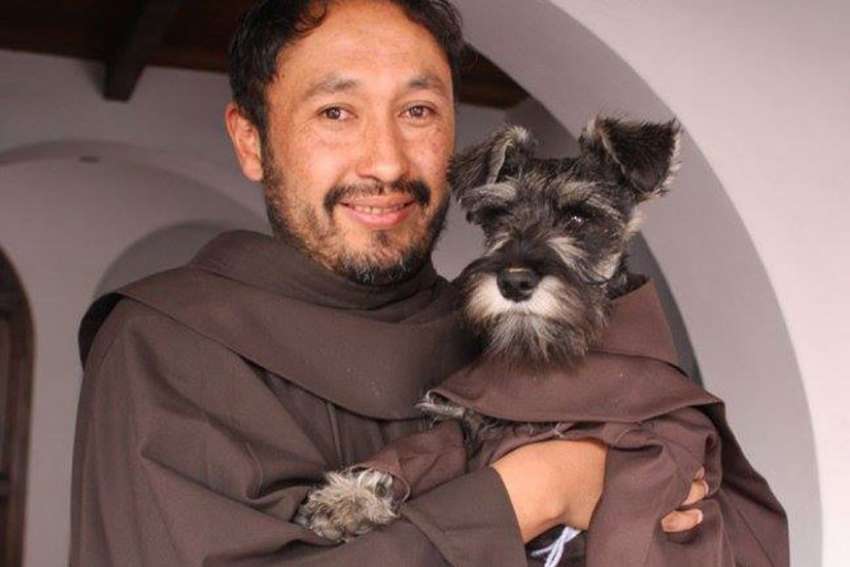His name is Friar Carmelo, but they’ve nicknamed him Friar Bigotón (Spanish for mustache).
The friars found the stray schnauzer on the streets and decided to adopt him as one of their own, even going so far as to outfit the pup with his own Franciscan habit.
"Sometimes we brothers have a laugh among ourselves and there is a brother here that is also called Carmelo, who has a moustache, so that was sort of the inspiration [behind his name]," one of the friars told local television channel ATB.
In Facebook photos posted by Franciscan friar Kasper Mariusz Kapron which have been shared hundreds of times, Friar Carmelo can be seen running and playing throughout the monastery grounds, and even “preaching to the fish” in the monastery pond.
"His life is all about playing and running," friar Jorge Fernandez told The Dodo. "Here, all of the brothers love him very much. He is a creature of God."
The adoption was made possible by animal rescue group Proyecto Narices Frías (Cold Nose Project). The animal group stated in a post on Facebook that they hoped more religious groups would be inspired by the story to adopt animals in need.
"If only all the churches of our country adopt a dog and care for him like Friar Bigotón," the group wrote in a post on Facebook, "we are sure that the parishioners would follow his example."
The friars told local media that the dog has a bit of a naughty side, and has been known to chew things or hide them in the monastery garden. Still, he remains a beloved part of monastery life.
(Story from the Catholic News Agency)


